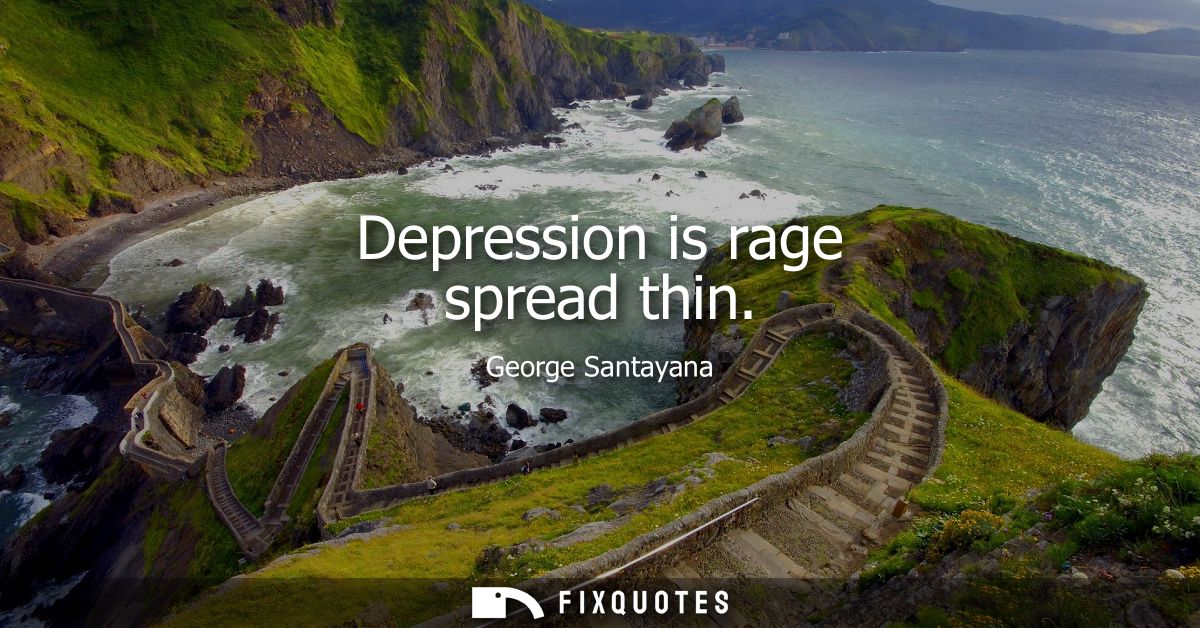"Depression is rage spread thin"
About this Quote
George Santayana’s assertion, “Depression is rage spread thin,” encapsulates the complex relationship between anger and sadness in the human psyche. Depression is often perceived solely as overwhelming sadness or numbness, but this perspective suggests a hidden undercurrent of anger within depressive states. Instead of anger erupting outwardly or being recognized as raw fury, it becomes diffused, almost invisible, woven silently through daily existence. The “thinness” implies that this rage is not concentrated or violent, but subtle and persistent, coloring every thought and feeling with a barely perceptible, chronic discontent or resentment.
This concept resonates with psychological insights, as suppressed anger is frequently listed among the root causes or symptoms of depression. Social conventions, family dynamics, or personal inhibitions might lead a person to deny or subdue their anger, channeling that energy inward. Over time, unexpressed anger erodes a person’s sense of agency and control, leading to feelings of helplessness and despair. Whereas anger can motivate action and assert boundaries, when it is forbidden or seen as unacceptable, its energy stagnates, turning sour within the self.
The phrase also invites compassion towards those experiencing depression, challenging judgments that view depressed individuals as passive or lacking willpower. Recognizing the hidden presence of rage illuminates the complexity and pain underlying depressive states, there is intensity beneath the surface, a slow burn rather than a blatant fire. By understanding depression through this lens, it becomes possible to appreciate the emotional battle being waged within, as individuals struggle with anger they cannot safely acknowledge or resolve.
Such insight offers avenues for healing: through therapy, support, and introspection, individuals might learn to identify, express, and work through anger, thereby diminishing its hold and reducing the “thin” spread of rage that blights daily life. In unraveling this emotional tapestry, hope lies in reconnecting with vitality once drained by suppressed resentment.
About the Author

